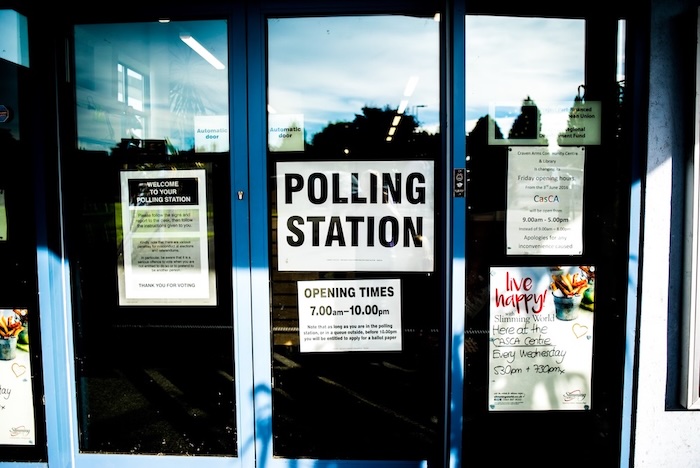What is oppression?
To design for ”good,” it’s important to know where you’re starting from — a status quo of oppression. Oppression is the state of inequality of power and privileges between groups. This results when dominant groups exert their power and privilege against those with less power and privilege. We’ll call the latter “marginalized folks.”
That’s how those on the margins end up excluded, overlooked, ignored, stigmatized and harmed. Dominant groups restrict them from having the same opportunities, freedom and benefits.
Oppression is by design
This status quo of oppression in the world goes far beyond unconscious bias. It’s by design, happening at all levels in society to keep existing power dynamics locked in place. It’s reinforced by societal norms, institutional biases, interpersonal interactions and individual beliefs.
That’s why we call it systemic oppression. It’s rooted in a history of colonialism, hegemony and domination. The world of design is no exception. Oppression is ubiquitous there too — in the solutions we design, in the tools, systems and processes we use and even in the culture that governs our norms, behaviors and practices.
This is the reason the world around us seems to be designed for a cisgender,1 wealthy heterosexual man who is not disabled. This so-called “average” user is actually not so average. He is the “dominant default” because the identities that he possesses hold the most power and privilege in society.2
1 This means that the sex assigned to you at birth is the same as the gender you identify with today.
2 We recognize that hierarchies of power and privilege are not the same in all cultures and countries. However, systems of oppression like the cis-hetero patriarchy, white supremacy, capitalism and ableism tend to cut across cultures and geographies.
Oppression in design
Oppression isn’t perceptible to everyone to the same degree. Our lived experiences, our understanding of it and our willingness to see it can affect our capacity to see it. Let’s make it more perceptible. We’ll look at how oppression shows up in different designs. You can cite these examples in your work to help others become more aware of the harms experienced by marginalized groups.
Physical products
TW: Mentions of domestic violence and death

Apple Airtags
Victims of intimate partner violence (IPV) around the world have been stalked and harassed by partners with Apple AirTags. Apple AirTags are designed to track personal belongings. Abusive partners have misused them for domination and control for their. Victims of IPV are disproportionately female. And perpetrators of this crime are far more likely to be male according to police reports.1
Impact
Apple’s global device network and extensive marketing has made it “cheaper and easier than ever”2 for stalkers and abusers to stalk and harm women all over the world. Women experience IPV irrespective of background or identity. However, Black women will be disproportionately impacted, as they are 3 times more likely than white women to experience death as a result.3
1 Samantha Cole, Motherboard: Tech by Vice, “Police Records Show Women Are Being Stalked With Apple AirTags Across the Country”
2 Ibid.
3 Institute on Domestic Violence in the African American Community (IDVAAC), “Facts about Domestic Violence & African American Women “
Environments

Parisian metro system
One out of six people in France are disabled.1 But only 3% of the Parisian
metro system, which is used by 4 million passengers daily, is fully accessible
for people who are physically disabled or have motor impairments.2 Paris falls significantly behind comparable cities in Europe. For instance, the London Underground is 20% accessible, while the Barcelona metro is 80% accessible.3
Impact
The financial, emotional, physical and mental toll of inaccessible public
transportation can be quite high for disabled folks. This translates
into carrying the responsibility of meticulous planning, lost time due
to prolonged travel times, and higher costs for alternate modes of
transportation, such as taxis.
1 Disability:IN, “France“
2 Evie Burrows-Taylor, The Local, “Why is the Paris Metro still out of bounds for disabled people?“
3 Ibid
Services
Covid registration in India
In 2021, access to the Covid vaccine in India required registration via a web
portal, disregarding those without internet access or digital literacy.
Impact
An online-only registration system favors the wealthy and the privileged.
While it’s designed with the assumption of universal internet access, internet
connectivity ranges anywhere from 20% to 56% of the population.1
This leaves a large group of folks with less social power unvaccinated. It also
shifts the responsibility (and blame) for poorer health outcomes away from the government to those who are the least digitally connected and literate.
1 Sean McDonald, Brookings, Designing Digital Services for Equitable Access.
Policies

U.S. voting laws and policies
U.S. politicians have enacted laws and policies, such as redrawing district lines or requiring limited forms of identification, that aim to supposedly “protect” the legality and safety of voting. Instead, they create significant barriers to registering to vote and voting that disproportionately impact marginalized communities. Identity cards aren’t easily accessible to everyone and district lines can be manipulated to favor a particular political party and/or racial or ethnic group.
Impact
Voters who are Black, Indigenous, Brown1, disabled, immigrants, students
and/or elderly are the most affected by these barriers. As a result, their
political power is decreased, fear is instilled in their communities and they
are unjustly penalized and criminalized them for violations of these unfair
laws.
1 This term refers to the use of “Brown” as a self-identifying label by certain Americans of South Asian, Middle Eastern and Latin American descent.







